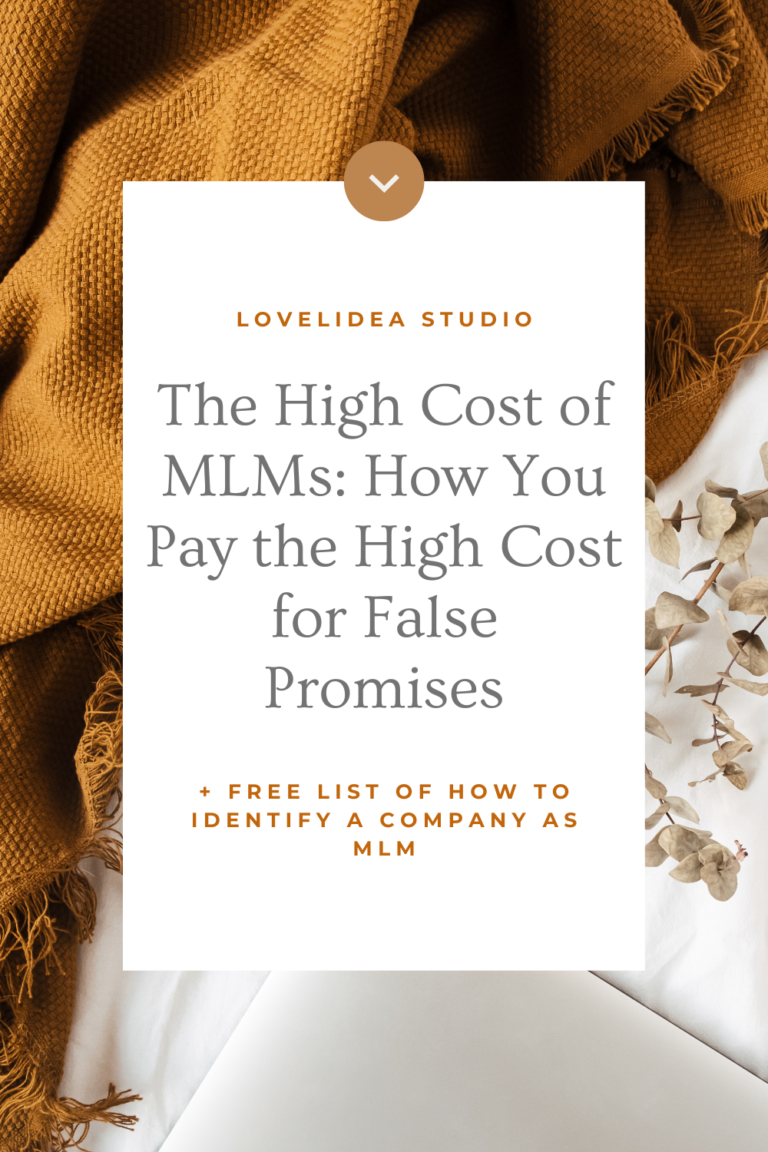
In recent years, Multi-Level Marketing (MLM) schemes have gained significant attention, often portrayed as lucrative opportunities for individuals seeking financial independence and entrepreneurial success. Promising flexible work hours, unlimited earning potential, and the chance to be your own boss, MLM companies attract participants with enticing visions of prosperity and fulfillment. However, behind the facade of promise lies a darker reality—one where participants ultimately pay a steep price for chasing these false dreams.
A Multi-Level Marketing (MLM) company is a business structure that sells products or services through a network of distributors. These distributors earn income based on their sales of the company’s products or services as well as the sales made by the distributors they recruit. The MLM model creates a hierarchy of distributor levels, or “downlines,” where individuals at higher levels earn commission on the sales made by those below them in the hierarchy.
The distinguishing feature of MLM companies is their emphasis on recruiting new members. While traditional businesses focus on selling products or services to consumers, MLM companies also incentivize their members to bring in new distributors. This aspect has led to criticism, with detractors arguing that some MLMs focus more on recruitment than on actual sales to external customers, resembling a pyramid scheme. However, legitimate MLM companies operate legally and focus on real sales to external customers as the primary source of income for their distributors.
MLM companies operate in various industries, including health and wellness, beauty and cosmetics, home goods, and more. Distributors often use personal networks and social media to sell products and recruit new members, benefiting from the personal and direct nature of these sales channels.
Despite the potential for income, success in MLM requires significant effort, and the majority of participants may earn little to no profit. Critics point out the high dropout rates and the financial losses experienced by many participants. However, supporters of the MLM model argue that it offers opportunities for entrepreneurship and income generation with relatively low upfront investment compared to starting a traditional business.
At the heart of many MLM pitches lies the allure of quick riches. Participants are lured in by promises of effortless earnings and the opportunity to achieve financial freedom with minimal effort. However, the reality is far from glamorous. While a select few may achieve success within the MLM structure, the vast majority find themselves struggling to turn a profit, despite investing significant time, money, and energy into their endeavors.
The Illusion Of Easy Wealth

The Financial Burden of Participation

One of the most significant costs associated with MLM is the financial burden placed on participants. From hefty startup fees and mandatory product purchases to ongoing monthly quotas and hidden expenses, individuals involved in MLMs often find themselves trapped in a cycle of spending with little to show for it. Coupled with the pressure to recruit new members and maintain a downline, these financial obligations can quickly spiral out of control, leaving participants drowning in debt and disillusionment.
“A critical analysis of MLMs shows that more than 99% of people lose money in these schemes. This figure is drawn from a comprehensive examination of the industry, where the analysis had to estimate critical but undisclosed figures due to MLM companies’ lack of transparency. The attrition rates are particularly telling, with 50% of people dropping out within the first year and 90% to 95% leaving within five years. After ten years, almost everyone has dropped out.” Info from Sequence Inc.
The Ethical Quandary of Exploitation
In addition to the personal costs borne by participants, MLM schemes raise ethical concerns regarding their recruitment and compensation structures. Critics argue that MLM companies disproportionately profit from the recruitment of new members rather than the sale of actual products, leading to a system that prioritizes recruitment over genuine entrepreneurship. Furthermore, the hierarchical nature of MLMs often results in exploitation, with those at the top benefiting at the expense of those at the bottom who are left struggling to break even.
The True Cost

The high cost of MLM participation extends far beyond the realm of finances, exacting a toll on participants’ emotional well-being, personal relationships, and ethical integrity. While MLM companies continue to peddle false promises of wealth and success, the reality is that the overwhelming majority of participants will ultimately pay the price for chasing these elusive dreams. By shining a light on the true costs of MLM involvement, we can empower individuals to make informed decisions and pursue legitimate pathways to prosperity and fulfillment.
Starting my own business ethically is more important than being successful in an MLM because someone got to the top because of another person's failures.
“During the COVID-19 crisis, MLM companies experienced significant growth, with Avon, for example, reporting a 53% increase in sales representative sign-ups in the first eight months of 2020. This boom was attributed to MLM companies leveraging the crisis to their advantage, encouraging existing members to recruit more aggressively under the guise of offering financial independence during uncertain times. This trend was observed across the MLM industry, with companies rebranding their approach as “social selling” and capitalizing on the increased social media usage and economic vulnerabilities of potential recruits.” written by Jacobin.
MLMs are known to boom in a financial crisis when families need the extra income most and, as stated above, 99% will actually loose money in an MLM business.

How to Spot an MLM
Identifying a “business opportunity” as an MLM (Multi-Level Marketing) scheme involves recognizing certain characteristics typical of these models. Here’s a quick guide to help you spot MLM opportunities:
Recruitment Focus: A key feature of MLMs is their emphasis on recruitment. If a business opportunity prioritizes recruiting more members over selling a product or service to the general public, it’s likely an MLM. The pitch often includes earning potential from people you recruit.
Upfront Investment: MLMs often require new members to make an initial investment to start selling their products. This could include purchasing a starter kit or inventory. If there’s a significant emphasis on paying money upfront to join, be cautious.
Inventory Sales: Be wary if there’s a strong push for distributors to buy and maintain large inventories of products. This can often lead to individuals having unsold products and financial losses.
Complex Compensation Plans: MLMs typically have complicated commission structures. If earnings are based not just on your sales but also on the sales of the recruits in your “downline,” and if the compensation plan is difficult to understand, it might be an MLM.
High Earnings Claims: Be skeptical of business opportunities that showcase unusually high earnings without clear, attainable steps to achieve them. MLMs often use success stories and high income projections as recruitment tools, which may not reflect the average participant’s experience.
Monthly Sales Quotas: MLM companies might require members to meet certain monthly sales quotas to qualify for commissions or to remain active distributors. This can pressure members to buy products themselves if they can’t sell enough.
Meetings and Seminars: Regular meetings, seminars, or conferences that focus more on motivation and recruitment rather than practical sales techniques and product information can be a sign of an MLM. These events often highlight success stories and the potential for making money by expanding your network.
Limited Product Information Online: If it’s difficult to find detailed information about the products or services offered without first talking to a company representative or attending an information session, this secrecy can be a red flag.
Research the Company: Look up the company’s name followed by terms like “review,” “scam,” or “complaint.” This can lead to information from former participants and consumer protection agencies that can offer insights into the company’s practices.
Check with Regulatory Bodies: Websites of consumer protection agencies like the Federal Trade Commission (FTC) in the United States or similar organizations in other countries can provide information on MLMs and any legal actions taken against them.
Being aware of these signs can help you make an informed decision before joining an MLM or any other business opportunity. Always conduct thorough research and consider seeking advice from those with experience in the industry or from financial advisors.

